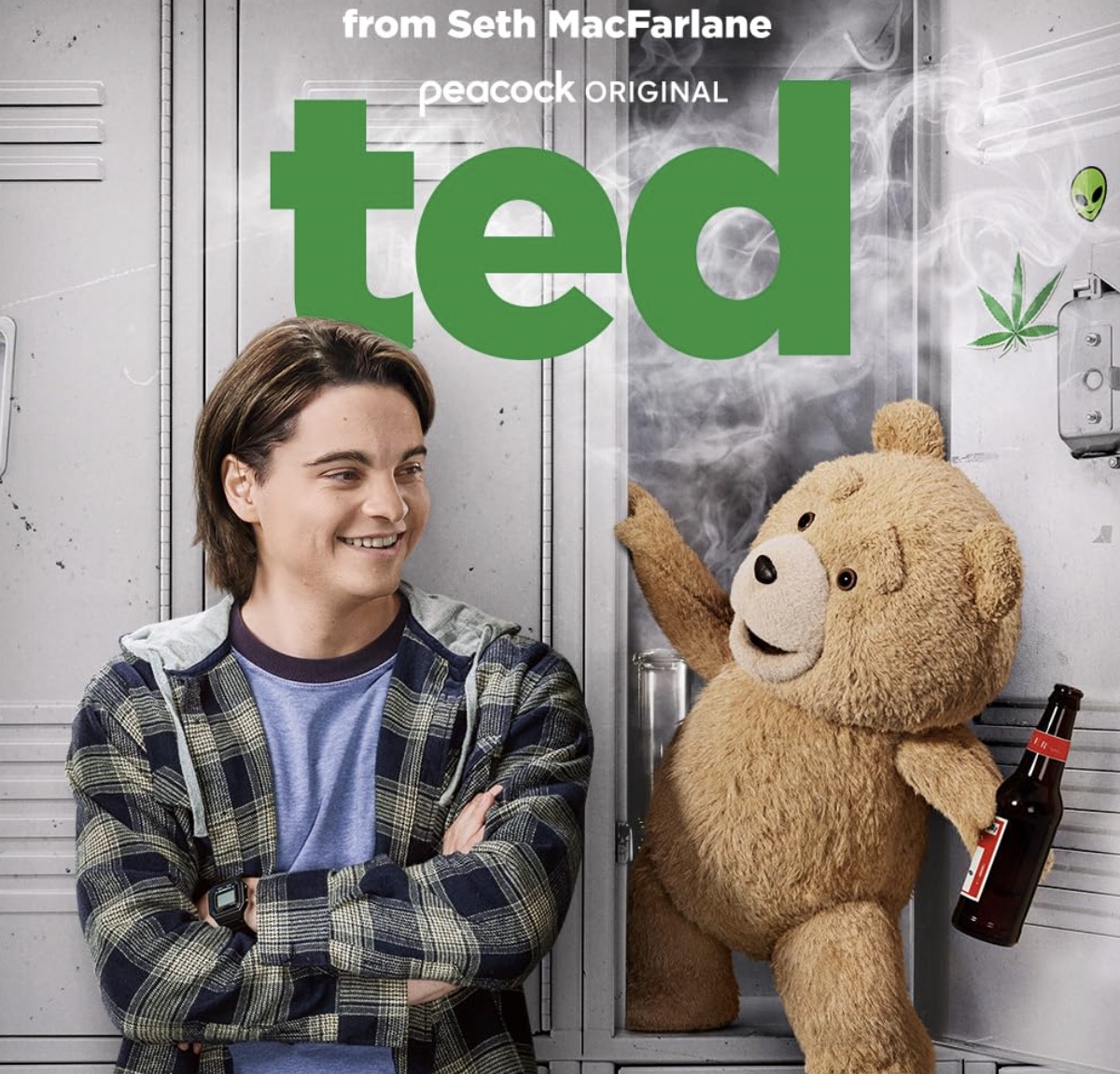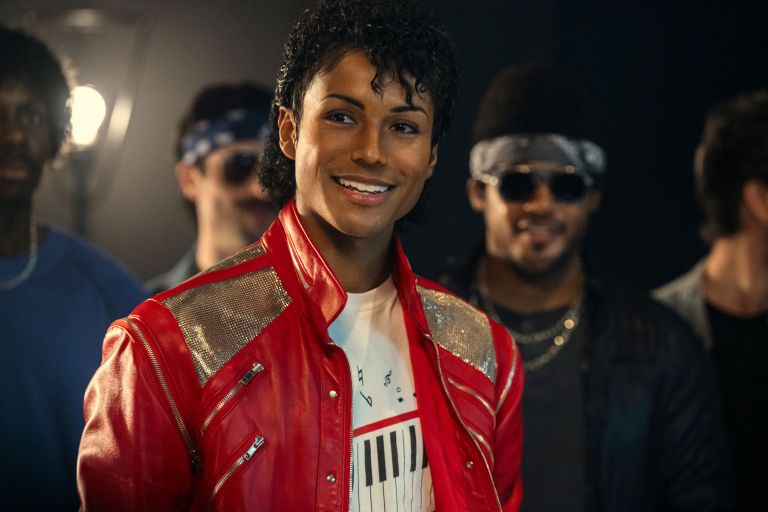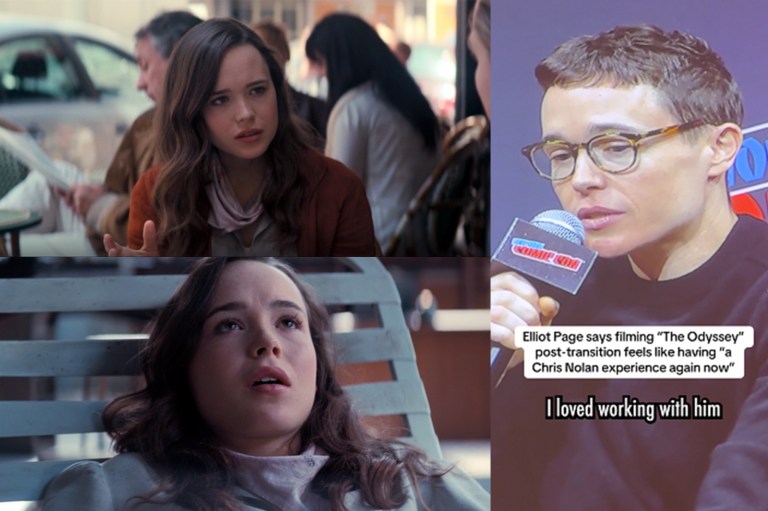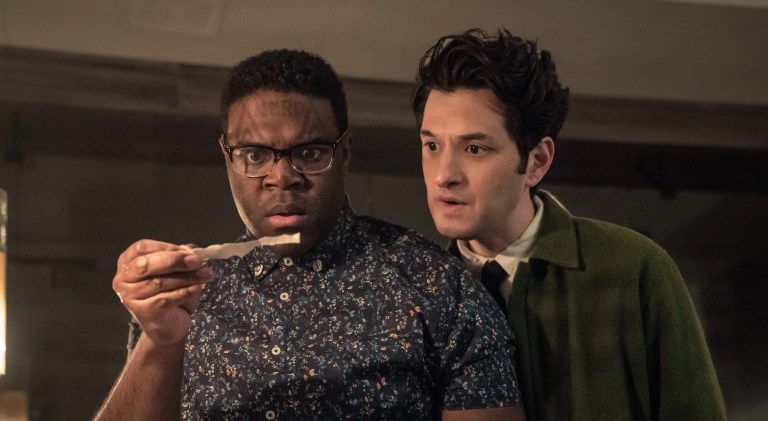
The ‘Ted’ TV Show Misses the Point of the Films
It’s official: Peacock’s Ted is a monster hit, becoming the streaming service’s most-watched original title in its first three days of release, as per TVLine. Even though nine years passed since Seth MacFarlane’s foul-mouthed teddy last ran amok on the screen, the prequel series confirms there’s still a demand for this care(free) bear. With the phenomenal viewership numbers and generally positive reviews from the audience, the confetti (and Sam J. Jones) should be rolled out for the celebration, but there’s a fundamental problem everyone overlooks here: The Ted TV show nullifies the point of the films. Ultimately, calling into question the need for it to exist.
An eternal boy and his teddy
The first Ted movie reveals the origin story for the talking teddy bear, showing how eight-year-old John Bennett makes a wish for his stuffed animal to come to life and be his friend. His plea occurs as a shooting star passes overhead, so John’s wish is granted through a combination of “just go with it” movie logic and a large suspension of disbelief. From this moment onward, they are glued at the hip as best buds forever, and the 2012 film catches the viewer up with John as a thirtysomething slacker (played by Mark Wahlberg) and Ted (voiced by Seth MacFarlane) as his partner in grime.
Despite their on-screen tomfoolery, the core theme of the Ted movies centers on John’s inability to grow up. At first, everyone blames his talking teddy bear for his failure to do anything meaningful in his life, but it’s John himself who refuses to take responsibility for his actions (and inactions) and face the cold, hard truth about adulthood. Metaphorically, Ted represents both John’s greatest escape and hindrance, since the human character fears the innocence of childhood disappears if he chooses to mature. It’s a coming-of-middle-age story.
That said, the two Ted films don’t preach about John needing to forget about his talking teddy bear or to kill his inner child to move on. Instead, the message is about staying young at heart but not at the cost of shirking responsibility. These movies tell the audience that it’s possible to be a fully functional adult and to keep the magic of childhood alive. It’s an internal tug-o-war that most adults can relate to at some point in their lives.
An overstuffed flashback
It’s understandable where the idea for a Ted prequel would come from, since there was nowhere else to go from a storytelling perspective in the main continuity where John is an adult. Thanks to Seth MacFarlane serving as the showrunner here, the show doesn’t deviate from the hilarity of the films, boasting its share of side-splitting moments and gross-out humor that follow the same formula. Setting it in the ’90s also adds a nice touch of nostalgia and closes the loop since John and Ted reminisce about the good ol’ days a lot in Ted and Ted 2. Yet, while this checks the boxes of what fans would want, the comedy series serves as nothing more than an overblown flashback to fill in the blanks of the greater, more interesting story.
At this stage of his life, John doesn’t need to grow up since he’s a 16-year-old teenager going through the trials and tribulations of high school. Sure, there is an element of societal pressure for him to abandon a teddy bear at this age, but it’s nowhere near the looks people shoot him when he turns 30. More importantly, the audience watching at home knows he doesn’t mature or give up Ted because the films confirm these details, so there’s a predictability in knowing where they end up.
Essentially, the sole reason the Ted TV show exists is to bring John and Ted together again to get up to further mischief and provide a few laughs along the way. That’s fine, and it serves a functional purpose, but how does it differentiate itself from every other sitcom in the long run, apart from having a talking bear as a main character? Additionally, what value does it add to the franchise beyond being a cash grab?
Ted turns into ‘Family Guy’
Under the veneer of humor, the Ted films address the sobering issue of the death of childhood. Every viewer knows the feeling of how the summers with friends and the freedom to roam seemingly evaporate overnight. These movies offer a glimmer of hope for the hopeless, though, suggesting how it is possible to face the next phases of life and not lose the zest and innocence of being young and carefree.
Conversely, the Ted TV show plays out like a live-action version of another Seth MacFarlane creation, Family Guy, which might have overstayed its welcome too. It’s a series where everyone makes jokes and indulges in situational hijinks as the gags – rather than a strong message – keep the story moving. Look, Ted Season 1 supplies an abundance of laughs, but the punchline offers nothing of substance. At some point, it will simply become known as the 21st-century version of ALF, but with a teddy bear in the place of the wise-cracking alien from Melmac.











